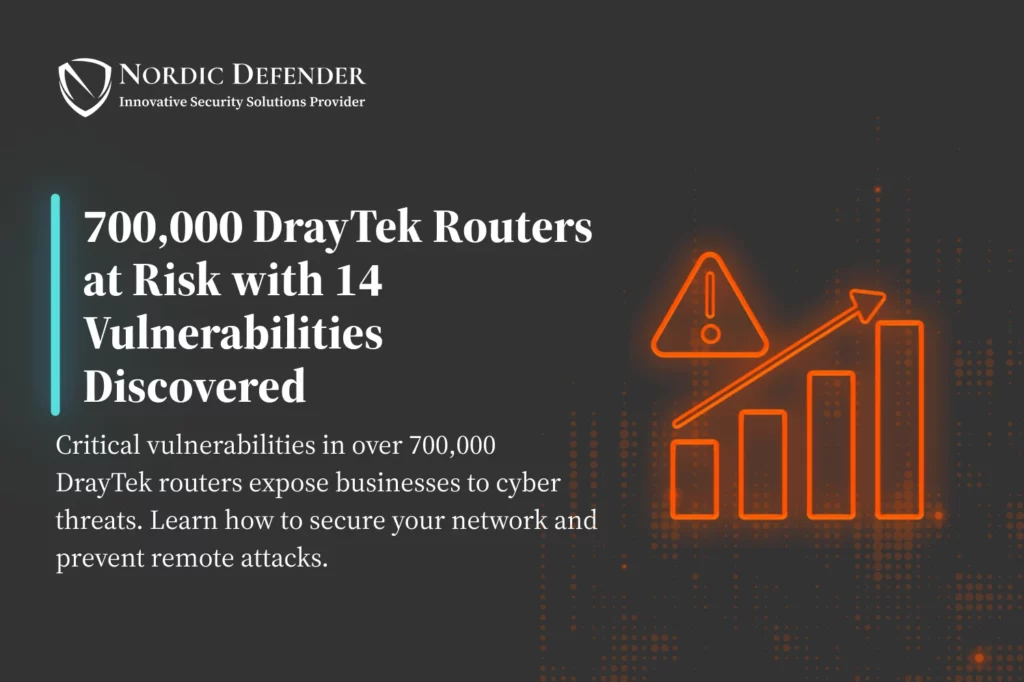In today’s rapidly evolving digital landscape, ensuring the security of network infrastructure is a critical priority for businesses. A recent disclosure of severe vulnerabilities affecting over 700,000 DrayTek routers has put organizations across the globe on high alert. These security flaws, if left unpatched, allow attackers to exploit routers remotely, potentially leading to catastrophic breaches. With DrayTek routers widely used across various sectors, particularly by small and medium-sized enterprises (SMEs) and remote workforces, the ramifications are substantial.
Understanding the Scope of the Vulnerability
The vulnerabilities discovered affect multiple DrayTek router models, many of which are integrated into business-critical environments. These weaknesses allow malicious actors to launch remote attacks, bypass authentication, and gain unauthorized access to internal network systems. Once a router is compromised, attackers can manipulate traffic, conduct man-in-the-middle (MitM) attacks, steal credentials, intercept sensitive data, and even deploy malware within corporate networks.
What makes this particular vulnerability alarming is its scale. With over 700,000 devices identified as vulnerable, it’s clear that a significant number of businesses face immediate risk. Worse still, many SMEs may not have the resources or technical knowledge to quickly detect or mitigate such risks, which could lead to delayed responses and increased exposure.
Technical Breakdown: How These Attacks Occur
To understand how these exploits work, it’s essential to recognize the layers of attack:
- Remote Access via Exploitation: Attackers first identify a vulnerable DrayTek router, which can be located through simple internet scans.
- Privilege Escalation: By exploiting authentication vulnerabilities, attackers gain administrator-level access to the router.
- Traffic Manipulation and Data Interception: Once inside, they can alter routing rules, redirect traffic, and intercept sensitive business communications, allowing for data theft or ransom demands.
- Network Takeover: In severe cases, attackers can effectively control the entire network, blocking or rerouting services and potentially rendering the business inoperative until demands are met or the threat is neutralized.
Why This Matters for Swedish Businesses
For organizations in Sweden, especially SMEs, the increasing reliance on digital infrastructure makes this vulnerability a serious concern. Many businesses rely on DrayTek routers to manage remote office connections, internal networks, and customer data. A successful attack could disrupt operations, cause financial losses, and damage customer trust.
Additionally, Swedish businesses are subject to stringent data protection regulations, such as GDPR. Any breach involving personal data could lead to significant fines and legal consequences. This amplifies the importance of patching systems promptly to avoid both cyberattacks and regulatory repercussions.
Mitigation Steps: What Can Be Done?
Immediate steps are necessary to protect businesses from this exposure. The following actions are recommended:
- Patch the Vulnerabilities: DrayTek has released security patches for affected models. IT administrators must prioritize applying these updates immediately. Delaying patches leaves organizations exposed to attack.
- Check for Indicators of Compromise: Businesses should audit their networks for any signs of unusual traffic patterns, unauthorized access attempts, or unexplained service interruptions. These could indicate that a router has already been compromised.
- Implement Stronger Network Segmentation: Isolating critical network components from routers can limit the scope of a potential attack. Ensuring that devices in sensitive areas of the network don’t share the same access as internet-facing equipment adds a layer of defense.
- Conduct Regular Penetration Testing: Proactively identifying vulnerabilities through services like crowd-sourced penetration testing is a proven method to strengthen network defenses. Regular testing simulates attacks and exposes weak points that attackers could exploit.
- Invest in Network Monitoring Tools: Advanced monitoring solutions can alert businesses to abnormal behavior, allowing for real-time responses to emerging threats. Automated monitoring tools help detect signs of potential intrusions early, before attackers can fully exploit the system.
Long-Term Strategy: Building Resilience in Cybersecurity
Beyond immediate actions, businesses need to adopt a long-term strategy for securing their infrastructure. Cyber threats are evolving rapidly, and vulnerabilities like those found in DrayTek routers highlight the importance of not just reactive but also proactive cybersecurity measures.
A comprehensive security framework should include:
- Regular Software and Firmware Updates: Ensuring that all network equipment, including routers, switches, and servers, are consistently updated with the latest patches.
- Endpoint Security: Protecting endpoints like laptops, smartphones, and IoT devices connected to the network to prevent lateral movement by attackers.
- Employee Training: Educating staff on best practices, including recognizing phishing attempts and secure internet usage, can reduce the likelihood of human error contributing to a security incident.
- Zero Trust Architecture: Adopting a zero-trust model, where no device or user is automatically trusted, reduces the chances of unauthorized access from compromised routers or other devices.
Conclusion: Staying Ahead of Threats
As the cybersecurity landscape continues to grow more complex, the vulnerabilities affecting DrayTek routers serve as a stark reminder of the importance of vigilance and preparedness. For Swedish businesses—particularly SMEs—staying ahead of these threats requires a multi-faceted approach, combining timely updates with strategic security initiatives.
Nordic Defender remains dedicated to providing cutting-edge solutions to help businesses stay secure, offering expert guidance on risk management, penetration testing, and compliance with cybersecurity best practices.
Ensure your organization is not among the vulnerable. Stay informed and act now to protect your critical infrastructure.
